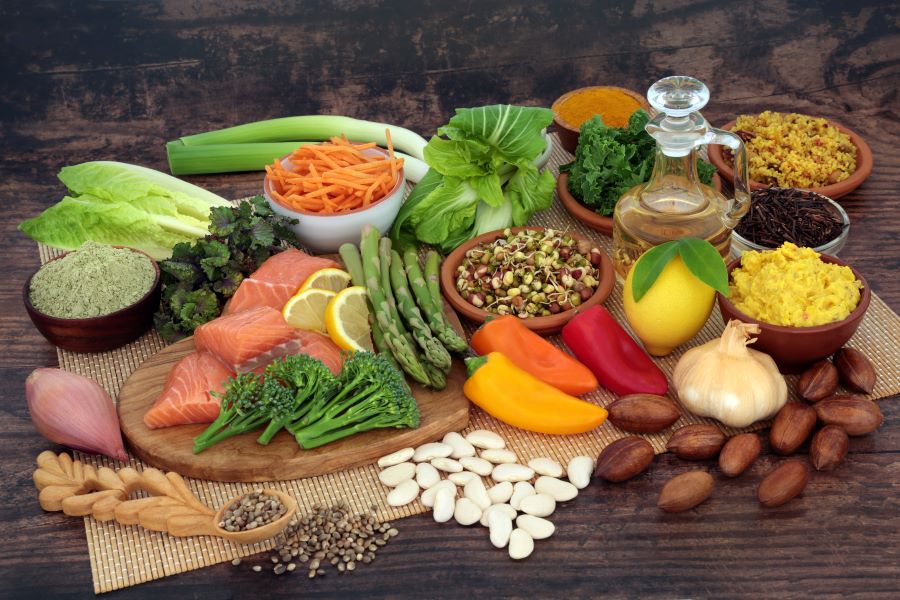Antioxidant-Rich Foods: Cellular Protection Through Dietary Choices
Understanding how dietary choices influence cellular health has become increasingly important in modern nutrition science. Antioxidants play a crucial role in protecting cells from oxidative stress and damage caused by free radicals. These powerful compounds, found naturally in various foods, support the body's defense mechanisms and contribute to overall wellness. By incorporating antioxidant-rich foods into daily meals, individuals can enhance cellular protection, support tissue repair, and promote optimal bodily function through strategic nutritional planning.

The human body constantly faces oxidative stress from environmental factors, metabolic processes, and physical activity. Antioxidants serve as protective agents that neutralize harmful free radicals, preventing cellular damage and supporting long-term health. These compounds work at the cellular level to maintain tissue integrity, support synthesis processes, and enhance the body’s natural defense systems.
How Do Antioxidants Support Cellular Health and Tissue Function?
Antioxidants protect cells by donating electrons to unstable free radicals, preventing them from damaging cellular structures including DNA, proteins, and lipids. This protection extends to various tissue types throughout the body, including fascia, muscle tissue, and connective structures. Vitamins C and E, along with compounds like beta-carotene and selenium, act as primary defenders against oxidative damage. These nutrients support collagen synthesis, which maintains skin elasticity and structural integrity of connective tissues. Additionally, antioxidants help preserve cellular membranes, ensuring proper nutrient transport and waste removal at the cellular level.
What Role Do Micronutrients and Minerals Play in Cellular Protection?
Micronutrients and minerals work synergistically with antioxidants to enhance cellular defense mechanisms. Zinc, selenium, copper, and manganese serve as cofactors for antioxidant enzymes like superoxide dismutase and glutathione peroxidase. These minerals enable the body to produce its own antioxidant defenses internally. Iron supports oxygen transport to cells, while magnesium participates in hundreds of enzymatic reactions that maintain cellular energy production. B vitamins facilitate cellular metabolism and energy conversion, ensuring cells receive adequate fuel for repair and maintenance. Proper mineral balance also supports electrolytes, which regulate fluid balance, nerve signaling, and muscle contraction at the cellular level.
How Does Oxygen Utilization Affect Cellular Function and Adaptation?
Efficient oxygen utilization is fundamental to cellular health and adaptation. Cells require oxygen for aerobic metabolism, which produces energy through mitochondrial processes. However, oxygen metabolism also generates reactive oxygen species as byproducts. Antioxidants help manage these byproducts, preventing excessive oxidative damage while allowing beneficial cellular signaling. Breathwork practices and proper breathing patterns enhance oxygen delivery to tissues, supporting cellular respiration and energy production. This improved oxygenation promotes cellular adaptation to physical stress, enhances recovery processes, and supports metabolic efficiency. The balance between oxygen utilization and antioxidant protection determines how effectively cells function under various conditions.
Can Dietary Choices Support Lymphatic Drainage and Mobility?
Nutritional choices significantly influence lymphatic system function and physical mobility. The lymphatic system relies on proper hydration and micronutrient availability to transport waste products and immune cells throughout the body. Antioxidant-rich foods reduce inflammatory compounds that can impair lymphatic drainage, promoting efficient waste removal from tissues. Foods high in vitamin C support collagen production in lymphatic vessel walls, maintaining their structural integrity. Adequate protein intake provides amino acids necessary for tissue repair and maintenance of fascia and connective structures. Proper nutrition also supports joint health and mobility by reducing oxidative stress in cartilage and synovial tissues, allowing for better movement patterns and physical stability.
What Amino Acids Contribute to Tissue Synthesis and Alignment?
Amino acids serve as building blocks for protein synthesis, essential for maintaining tissue structure and proper body alignment. Essential amino acids like leucine, isoleucine, and valine support muscle protein synthesis and recovery after physical stress. Glycine and proline are particularly important for collagen formation, supporting fascia, tendons, ligaments, and skin integrity. Glutamine aids in cellular repair and immune function, while arginine supports blood flow and oxygen delivery to tissues. Adequate amino acid intake ensures the body can continuously repair and rebuild tissues, maintaining proper posture and structural alignment. Complete protein sources provide all essential amino acids, while strategic combinations of plant proteins can achieve similar results for those following plant-based diets.
How Does Progressive Overload Relate to Cellular Adaptation?
Progressive overload principles apply not only to physical training but also to cellular adaptation processes. When cells experience controlled stress through exercise or activity, they adapt by becoming more resilient and efficient. This adaptation requires adequate nutritional support, including antioxidants to manage increased oxidative stress, amino acids for tissue repair, and micronutrients for enzymatic processes. Antioxidant-rich foods help cells recover from training stress while supporting the adaptation process. The balance between stress and recovery, supported by proper nutrition, determines how effectively cells adapt and improve function. Without sufficient antioxidant protection and nutritional support, excessive oxidative stress can impair adaptation and lead to cellular damage rather than beneficial changes.
Which Foods Provide Optimal Antioxidant Protection?
Numerous whole foods offer substantial antioxidant content and cellular protection benefits. Berries including blueberries, strawberries, and blackberries contain high levels of anthocyanins and vitamin C. Dark leafy greens like spinach, kale, and Swiss chard provide vitamins A, C, and E along with minerals and phytonutrients. Nuts and seeds offer vitamin E, selenium, and healthy fats that support cellular membranes. Colorful vegetables such as bell peppers, tomatoes, and carrots deliver carotenoids and various antioxidant compounds. Green tea, dark chocolate with high cocoa content, and legumes provide additional antioxidant diversity. Fatty fish supplies omega-3 fatty acids with anti-inflammatory properties, while herbs and spices like turmeric, ginger, and cinnamon concentrate powerful antioxidant compounds in small servings.
Building a diet rich in diverse antioxidant sources supports comprehensive cellular protection and optimal body function. The synergistic effects of various antioxidants, micronutrients, and amino acids create a robust defense system against oxidative stress. By prioritizing whole, minimally processed foods with high antioxidant content, individuals can enhance cellular health, support tissue integrity, and promote long-term wellness through informed dietary choices that align with the body’s biological needs.





